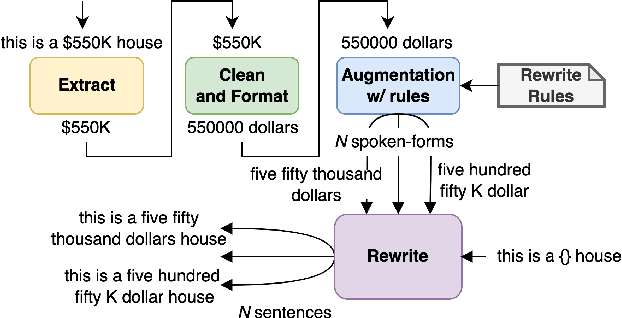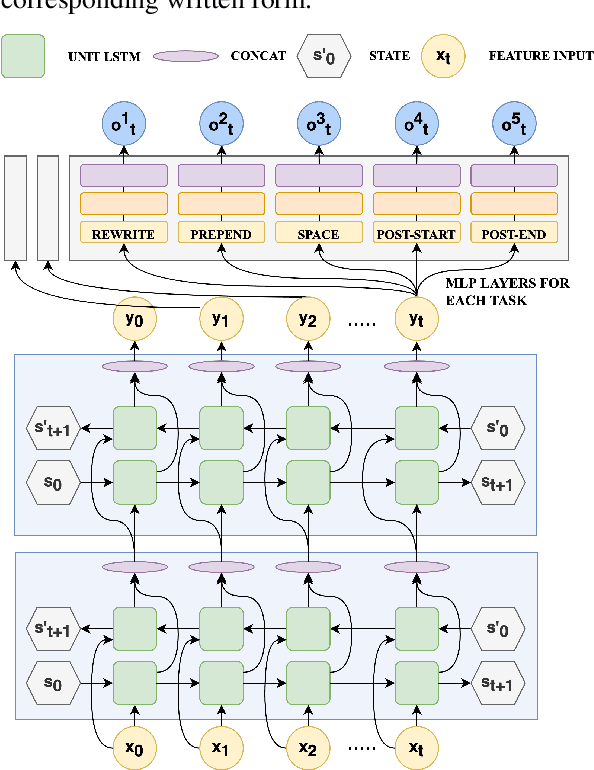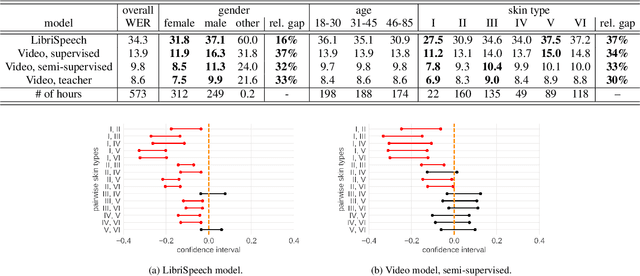Mark Chou
Improving Data Driven Inverse Text Normalization using Data Augmentation
Jul 20, 2022



Abstract:Inverse text normalization (ITN) is used to convert the spoken form output of an automatic speech recognition (ASR) system to a written form. Traditional handcrafted ITN rules can be complex to transcribe and maintain. Meanwhile neural modeling approaches require quality large-scale spoken-written pair examples in the same or similar domain as the ASR system (in-domain data), to train. Both these approaches require costly and complex annotations. In this paper, we present a data augmentation technique that effectively generates rich spoken-written numeric pairs from out-of-domain textual data with minimal human annotation. We empirically demonstrate that ITN model trained using our data augmentation technique consistently outperform ITN model trained using only in-domain data across all numeric surfaces like cardinal, currency, and fraction, by an overall accuracy of 14.44%.
Towards Measuring Fairness in Speech Recognition: Casual Conversations Dataset Transcriptions
Nov 18, 2021

Abstract:It is well known that many machine learning systems demonstrate bias towards specific groups of individuals. This problem has been studied extensively in the Facial Recognition area, but much less so in Automatic Speech Recognition (ASR). This paper presents initial Speech Recognition results on "Casual Conversations" -- a publicly released 846 hour corpus designed to help researchers evaluate their computer vision and audio models for accuracy across a diverse set of metadata, including age, gender, and skin tone. The entire corpus has been manually transcribed, allowing for detailed ASR evaluations across these metadata. Multiple ASR models are evaluated, including models trained on LibriSpeech, 14,000 hour transcribed, and over 2 million hour untranscribed social media videos. Significant differences in word error rate across gender and skin tone are observed at times for all models. We are releasing human transcripts from the Casual Conversations dataset to encourage the community to develop a variety of techniques to reduce these statistical biases.
 Add to Chrome
Add to Chrome Add to Firefox
Add to Firefox Add to Edge
Add to Edge